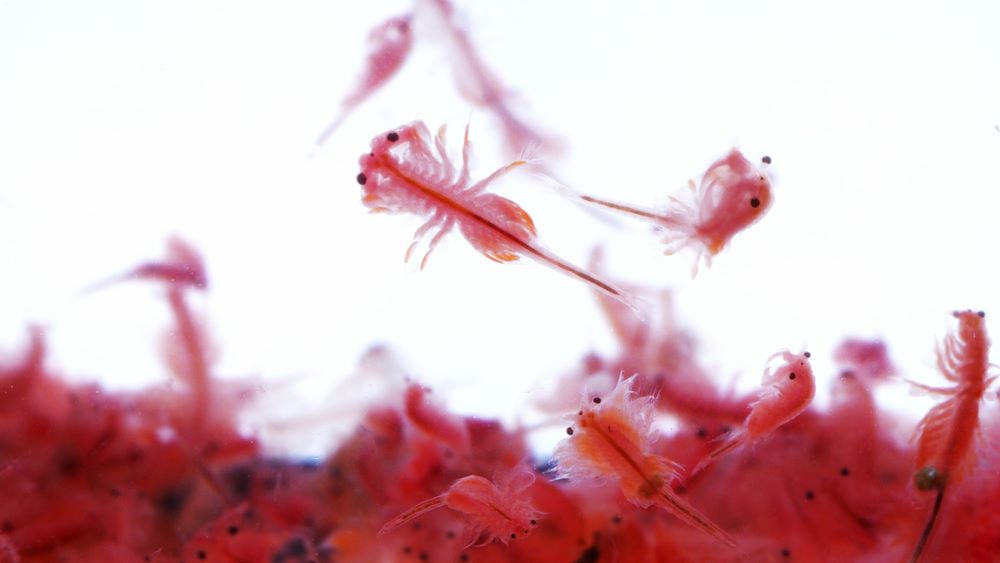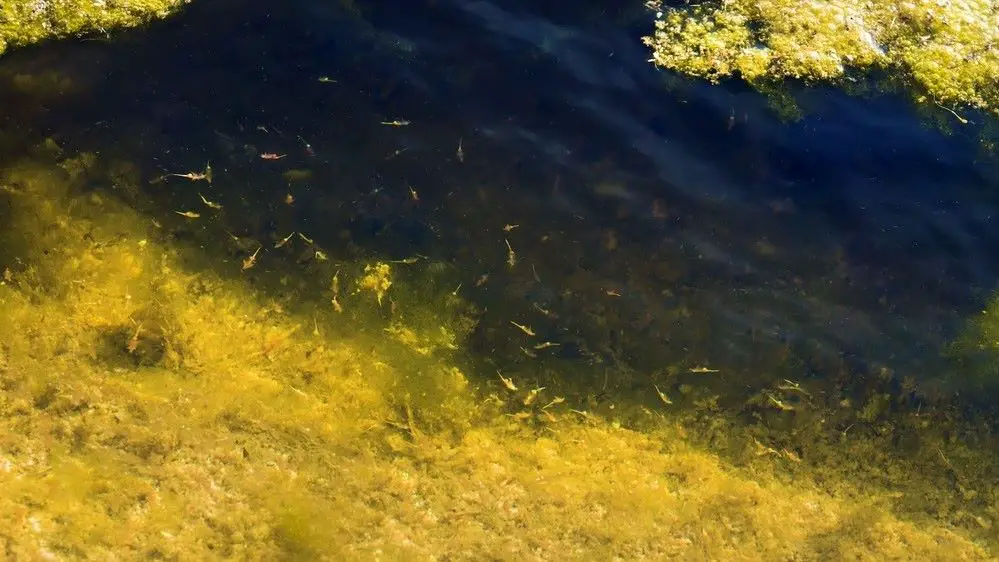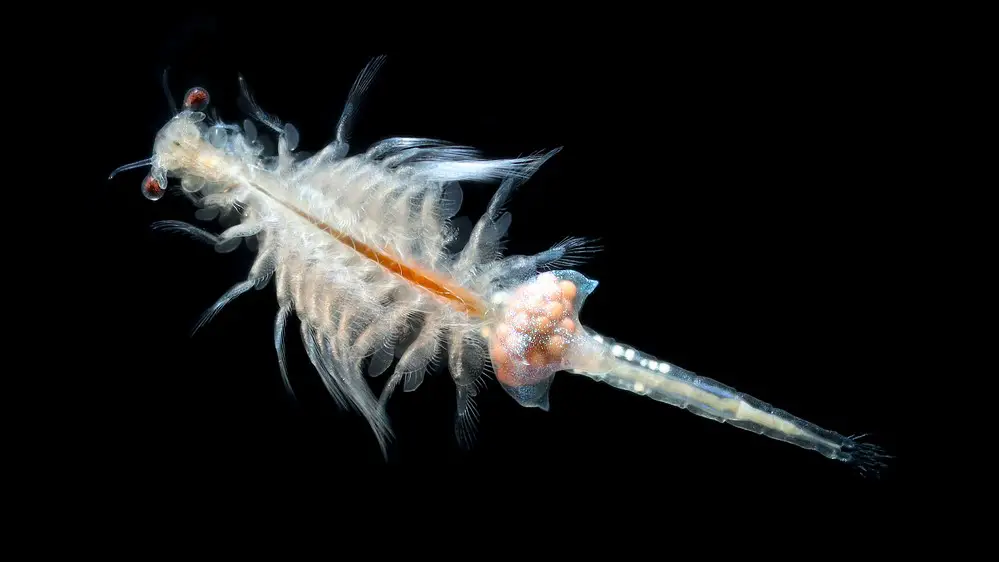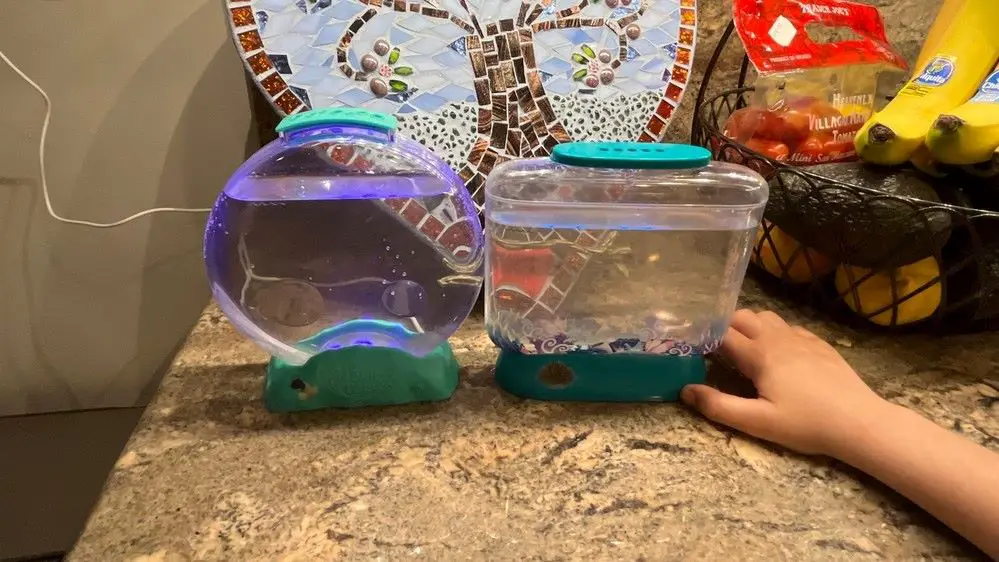Hello, Shrimpfam! Have you ever found yourself gazing at a small packet of dried eggs , a sense of curiosity piqued as you read the label “Sea Monkeys? You might have wondered, “What are these creatures? Are they some shrimp, or are they something else entirely?”
, a sense of curiosity piqued as you read the label “Sea Monkeys? You might have wondered, “What are these creatures? Are they some shrimp, or are they something else entirely?”
So, what are Sea Monkeys? Sea Monkeys are a type of brine shrimp that are sold as novelty aquarium pets. They are known for their ability to enter a dormant state, only to hatch and come to life when placed in water.
Well, let me take you on a journey that I embarked on a few years ago. I was in a similar situation, holding a packet of these so-called “Sea Monkeys” in my hand, a gift from a friend who knew about my passion for shrimp keeping. I was intrigued, to say the least.
The first challenge was understanding what these creatures were. The name “Sea Monkeys” conjured up images of tiny aquatic primates, which was amusing but far from the truth. After some research, I discovered that Sea Monkeys are a type of brine shrimp, a revelation that surprised and excited me.
The next hurdle was figuring out how to care for them. Unlike the cherry shrimp or Harlequin Rasbora I was used to, these brine shrimp had different needs. They required a specific salinity level in their water, which took some trial and error to get right.
or Harlequin Rasbora I was used to, these brine shrimp had different needs. They required a specific salinity level in their water, which took some trial and error to get right.
Over several months, I learned more about these fascinating creatures, their behaviors, needs, and unique characteristics. It was a journey filled with challenges but also with moments of joy and discovery.
Join me as we delve deeper into the world of the Sea Monkey, exploring their origins, their care requirements, and the unique features that make them such an interesting addition to the world of shrimp keeping.

What is the life cycle of Sea Monkeys?
Sea Monkeys, or Artemia salina, have a fascinating life cycle that sets them apart from many other aquatic species. It all begins with a dormant cyst, a tiny encapsulated egg that can survive in harsh conditions for years. You’ll find this stage in those packets labeled “Sea Monkeys”. When these cysts are introduced to water, the magic begins.
that sets them apart from many other aquatic species. It all begins with a dormant cyst, a tiny encapsulated egg that can survive in harsh conditions for years. You’ll find this stage in those packets labeled “Sea Monkeys”. When these cysts are introduced to water, the magic begins.
The water triggers the hatching process, and tiny nauplii, or larvae, emerge within a few days. These nauplii are incredibly small, barely visible to the naked eye, but they are voracious eaters. They feed on microalgae and other microscopic food particles, growing rapidly in the process.
particles, growing rapidly in the process.
As they grow, the nauplii undergo a series of molts, shedding their exoskeletons to allow for further growth. This molting process continues throughout their lives, but it’s during the early stages that the most dramatic changes occur. After several molts, the nauplii transform into their adult form, complete with the familiar segmented body and feathery appendages.
Adult Sea Monkeys are sexually mature and capable of reproduction. Interestingly, Sea Monkeys can reproduce both sexually, with males and females , and asexually through a process called parthenogenesis, where females produce offspring without fertilization from a male. This adaptability allows Sea Monkeys to thrive even in environments with a low population.
, and asexually through a process called parthenogenesis, where females produce offspring without fertilization from a male. This adaptability allows Sea Monkeys to thrive even in environments with a low population.
After reproduction, the cycle begins anew, with females producing cysts that can either hatch immediately if conditions are favorable or enter a state of dormancy, waiting for the right conditions to hatch. This incredible life cycle, with its ability to survive in harsh conditions, is one of the reasons why Sea Monkeys have fascinated hobbyists and scientists alike for decades.
How do Sea Monkeys survive in harsh conditions?
Sea Monkeys have a remarkable ability to survive in conditions that would be lethal to many other species. This resilience is largely due to their unique life cycle and the physiological adaptations they’ve developed over millions of years.
One of the key survival mechanisms of Sea Monkeys is their ability to produce dormant eggs, or cysts. These cysts are incredibly resistant and can survive in a dry state for years, even decades. They can withstand extreme temperatures, both hot and cold, and even survive in space’s vacuum!
When conditions become favorable again, such as when they are introduced to water, these cysts hatch, and the life cycle begins anew.
In addition to their cysts, adult Sea Monkeys have adaptations that allow them to survive in harsh aquatic environments. They are osmoregulatory, meaning they can adjust their body’s salt concentration to match their environment. This allows them to live in various salinities, from freshwater to highly saline conditions.
Sea Monkeys also have a high tolerance for variations in temperature and oxygen levels. They can survive in water temperatures ranging from about 50 to 95 degrees Fahrenheit and tolerate low oxygen levels by increasing their hemoglobin production, the protein in their blood that carries oxygen.
ranging from about 50 to 95 degrees Fahrenheit and tolerate low oxygen levels by increasing their hemoglobin production, the protein in their blood that carries oxygen.
Sea Monkeys are opportunistic feeders. They can eat various foods, from microalgae to yeast, and even survive periods of starvation by slowing down their metabolism and entering a state of reduced activity.

What are the care requirements for Sea Monkeys?
Caring for Sea Monkeys, while not overly complex, does require some specific considerations to ensure they thrive. The first and perhaps most crucial aspect is the water they live in. Sea Monkeys are brine shrimp and thus require a saline environment. The water should be treated with a special salt mix, often provided with the Sea Monkey kit, to mimic the natural brackish waters they inhabit.
Temperature is another important factor. Sea Monkeys prefer a moderate temperature range, ideally between 70 and 80 degrees Fahrenheit. They can tolerate a wider range, but for optimal health and growth, it’s best to keep the temperature within this range.
Lighting is also essential for Sea Monkeys. They don’t require any special aquarium lighting, but they do need some light to help them navigate their environment and to promote the growth of algae, which they feed on. Natural indirect sunlight or a standard room light is usually sufficient.
to help them navigate their environment and to promote the growth of algae, which they feed on. Natural indirect sunlight or a standard room light is usually sufficient.
Feeding Sea Monkeys is relatively straightforward. They are omnivores and can eat a variety of foods. Most Sea Monkey kits come with a packet of powdered food that you can sprinkle into the water. This food is typically a mix of yeast, spirulina, and other nutrients. It’s important not to overfeed them, though. A small pinch of food every few days is usually enough.
Finally, while Sea Monkeys are hardy creatures, they do appreciate a clean environment. Regular water changes , using the same saline water, can help keep their habitat clean and free from harmful waste buildup. However, be careful not to change all the water at once, as this can shock the Sea Monkeys. Instead, change a small portion of the water at a time.
, using the same saline water, can help keep their habitat clean and free from harmful waste buildup. However, be careful not to change all the water at once, as this can shock the Sea Monkeys. Instead, change a small portion of the water at a time.
By providing the right environment and care, you can ensure your Sea Monkeys live a healthy and happy life.

Are Sea Monkeys similar to other types of shrimp?
Despite their fanciful name, Sea Monkeys are indeed a type of shrimp. Specifically, they are a species of brine shrimp, known scientifically as Artemia salina. However, while they share some similarities with other types of shrimp, there are also some key differences that set them apart.
Like other shrimp, Sea Monkeys are crustaceans. They have a segmented body, a hard exoskeleton, and jointed appendages. They also share a similar diet with many other shrimp species, feeding on a variety of microscopic organisms and detritus.
However, Sea Monkeys have a unique life cycle that distinguishes them from most other shrimp. They have the ability to produce dormant eggs, or cysts, that can survive in a dry state for years. This survival mechanism allows them to endure harsh conditions, a trait not commonly found in other types of shrimp.
Another difference lies in their habitat. While many shrimp species are found in oceans, rivers, and lakes, Sea Monkeys are adapted to live in highly saline environments, such as salt pans or salt lakes. They have a high tolerance for salinity, which is not a common trait among other shrimp species.
In terms of care, Sea Monkeys are relatively low-maintenance compared to many other types of shrimp. They don’t require a large tank, complex filtration, or precise water parameters . This makes them popular for beginners or those looking for an easy-to-care-for pet.
. This makes them popular for beginners or those looking for an easy-to-care-for pet.
So, while Sea Monkeys share some similarities with other types of shrimp, their unique life cycle, habitat preferences, and care requirements set them apart, making them a fascinating species in their own right.

In Summary: Sea Monkeys, A Unique Addition to the Shrimp Family
To make a long story short, Sea Monkeys, with their unique life cycle and survival mechanisms, offer a fascinating insight into the world of brine shrimp. Their ability to produce dormant eggs that can survive for years in harsh conditions, their adaptability to highly saline environments, and their relatively easy care requirements make them a captivating species to explore and keep.
While they share some similarities with other types of shrimp, they also have distinct characteristics that set them apart. Whether you’re a seasoned shrimp keeper looking to expand your collection or a beginner looking for an easy-to-care-for pet, Sea Monkeys offer a unique and rewarding experience.
If you ever find yourself puzzled or in need of help with your Sea Monkeys, don’t hesitate to reach out. If you can’t reach me here, check out the Aquarium Shrimp Keeping community on Facebook. You’ll find a wealth of knowledge and a supportive community ready to help there.
Keeping community on Facebook. You’ll find a wealth of knowledge and a supportive community ready to help there.
On a final note, whether you’re diving into the world of Sea Monkeys or exploring other types of shrimp, remember to enjoy the journey. Each species offers its own unique charm and challenges, adding to the joy of shrimp keeping.
So, Happy Sea Monkey Keeping!
FAQ
Q. What are Sea Monkeys exactly? A. Sea Monkeys are a type of brine shrimp, known scientifically as Artemia salina. They are sold as novelty aquarium pets and are known for their ability to produce dormant eggs, or cysts, that can survive in a dry state for years.
Q. How long do Sea Monkeys live? A. The average lifespan of a Sea Monkey is about one to two years. However, since they can reproduce and their eggs can remain dormant for a long time, a colony of Sea Monkeys can continue for many years.
Q. What do Sea Monkeys eat? A. Sea Monkeys are omnivores and can eat a variety of foods. They feed on microalgae, yeast, and other microscopic food particles. Most Sea Monkey kits come with a packet of powdered food that you can sprinkle into the water.
Q. Can Sea Monkeys live in fresh water? A. No, Sea Monkeys are adapted to live in saline environments. They require a special salt mix in their water to mimic the natural brackish waters they inhabit.
Q. Are Sea Monkeys easy to care for? A. Yes, Sea Monkeys are relatively low-maintenance compared to many other types of shrimp. They don’t require a large tank, complex filtration, or precise water parameters. However, they do need a saline environment, moderate temperature, and regular feeding.
